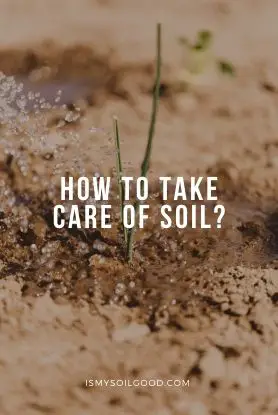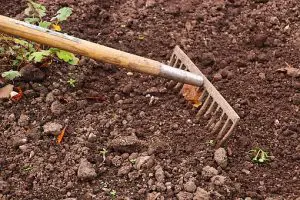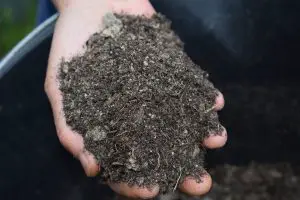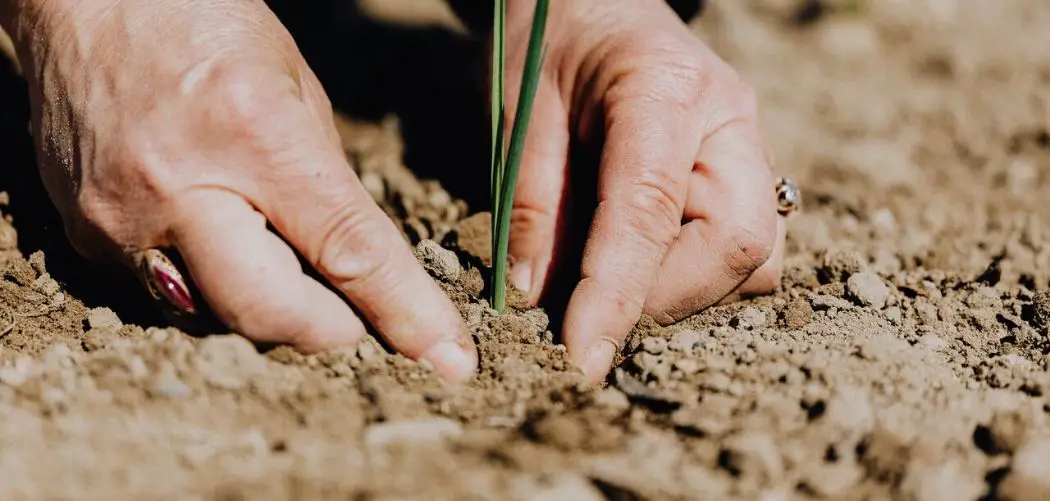We're an affiliate
We hope you love the products we recommend! Just so you know, we may collect a share of sales or other compensation from the links on this page. Thank you if you use our links, we really appreciate it!

Progressively more people are going into farming for passion or as a commercial venture. If you belong to this group, you probably want to know how to take care of soil. The difference between the lush green you see in model farms and struggling gardens is the quality of the soil and how well it is managed.
Not to worry, we are here to show you that caring for your soil is not rocket science. In this article, we discuss tips for easy soil management and how to optimize your garden’s productivity.
The skills you learn here will make you the envy of your fellow gardening enthusiasts or, if a commercial farmer, laugh all the way to the bank.
Most people view soil as mere dirt. Far from this soil is a complex ecosystem. Look at it like this; it has a three-dimensional structure, is occupied by microbial organisms, and hosts invertebrates, reptiles, and mammals. Above all, it supports the roots and tubers of plants.
If you want to feel proud when you look at your plants, your land has to be healthy; it must have adequate aeration, which is measured by the breathing of soil organisms and plant roots, and have the required nutrients and moisture, and minerals.
With the help of the tips that we will discuss below, you will be able to turn your garden around in no time.
Table of Contents
Tips on How to Take Care of Soil
1. Avoid Excessive Tillage

If you look around, tillage is almost a given for most modern crops and farming methods. Mention farming in any circle, and most people will respond with a farmer on his tractor tilling away on his land.
It is crucial to loosen up the earth and mix it into the soil surface material, which adds organic material and affords new life to microbial organisms.
Tillage also rearranges the soil structure and injects added amounts of oxygen, which improves nutrient breakdown and the natural propagation of plant roots.
These factors combined stimulate growth and will have you wanting to till your land as often as possible. However, these are short-term benefits, and inversion tillage has strong adverse short- and long-term effects.
As much as you want great results now, you have to understand the adverse effects of excessive tillage to know how to take care of the soil. Tillage kills soil organisms, encourages the growth of weeds, and the loosened soil is prone to erosion.
The gradual and progressive effects of tillage are the depletion of soil organic matter triggered by high soil respiration promoted by repeated tillage. To preserve your soil’s properties try to limit tillage to the minimum necessary.
Tilling also increases movement on the land, which can lead to compaction and treads, limiting water percolation and adequate circulation of air and nutrients. For small gardens use light tools like rakes and forks.
2. Soil Testing is Paramount
Our overall concern is how to take care of the soil. For you to adequately manage soil, you need to know its properties and deficiencies.
You can inspect the physical properties by eye, but you cannot do the same for chemical properties. For that, you need to test the soil, which is easily done using home soil test kits.
It will also evaluate the soil pH levels, which are crucial for nutrient uptake and the vibrant growth of your crops. Armed with this information, you are then in a better position to decide on fertilizer type and the amounts needed.
When you make these decisions from the point of information, you avoid expenses on fertilizers and soil treatments as well as over-fertilization, which could degrade your soil, a scenario we do not want. Therefore, we recommend you test your soil, which is accurate and comfortable as modern test kits are plugged and read.
3. Ensure Soil pH is Optimal
Soil pH is a unit that indicates the acidity or alkalinity of your soil. The pH of the soil is very important since it affects the solubility and, therefore, subsequent uptake of nutrients and minerals by the plants. Luckily with the help of a home soil test kit, you can easily gauge your soil’s acidity.
What you now need to know is the ideal soil pH level, which is 6.0 – 7.0. Most crops will do well in this range, which is slightly acidic towards neutral. At times you will not have the ideal range in your soil; therefore, you need to manage it.
If your soil is alkaline, it is not all doom; all you need to know is how to make the soil more acidic, and you are on your way to that lush garden you have always desired.
The simple addition of modifying agents like; aluminum sulfate, elemental sulfur, acidifying nitrogen, organic mulches, iron sulfate, and sphagnum peat, which is popular for small gardens. On the other hand, if it is acidic, adding compost or broadcasting lime to your garden can help.
Ensure that you thoroughly incorporate the lime and compost with your soil and water sufficiently. Once you achieve the desired balance, rest assured your plants will efficiently uptake nutrients from the soil.
4. Improving the Health of your soil

If you want to achieve any success in your garden you must ensure that the soil is healthy. Healthy soil provides nutrients, minerals, air, and water in a suitable balance for vibrant crops.
Here we will show you some of the most effective ways to achieve and maintain soil health in two stages; during the preparation of the soil and in the period in which plants are growing.
Start by adding organic matter made of decomposing plant life and other vegetative matter. This humus is vital as it holds the soil together in permeable crumbs for adequate air and water circulation.
It is also excellent for retaining water as it can absorb 90% of its weight in water. Organic matter also gives life to microbes and other soil organisms. Their activity helps in the breakdown of nutrients into forms readily available for plant uptake.
Their excrement also serves to enhance the soil structure and further fertilize the soil. Then work the elements into the ground, taking caution to minimize inversion tillage and keeping traffic on the soil to the minimum necessary.
As the plants grow, they deplete nutrients from the soil. These nutrients have to be replenished to ensure successive yields. Again, different developmental stages require specific nutrient and mineral boosts.
Plant cover crops to reduce direct evaporation and replenish soil nitrogen. Consider also mulching to shield delicate plants from pests and drying up at the base. Plants in a dry bed are lethargic. Mulch at the base also protects the delicate root system from direct sunlight and heat.
Quick Tips and Summary
By now, we have seen the correlation between healthy soil and your dream garden. Here are some practices you need at your fingertips every time you think of your garden.
- Reduce inversion tillage as it is disruptive to the structure and kills soil organisms.
- Add organic matter to provide humus for nutrients, structure, and water retention.
- Use cover crops to prevent evaporation and deter weed growth.
- Reduce the use of pesticides to preserve beneficial organisms and also for health reasons.
- Include legumes in your crop to replenish soil nitrogen, which is used up by plants.
- Rotate crops to give the soil time to recover and to kill crop-specific disease cycles.
- Limit the use of synthetic fertilizers as they are associated with acidifying the soil.
- Test your soil to establish the needed modification as over-fertilization degrades the soil.
- Weed your garden as often as required as weeds compete for nutrients with your crops, leading to struggling plants that we do not want.
- Finally, water your garden to maintain optimum moisture levels without waterlogging.
Conclusion
How healthy/fertile your soil directly affects how well your garden will produce. For your soil to be healthy, it is essential that you first understand how to take care of it. Therefore we recommend you test your soil before adding any alterations.
After you have the desired soil, you need to maintain it that way. You will achieve this by practicing the discussed soil care and fertility methods. These simple techniques are bound to put a smile on your face every time you walk into your farm.

